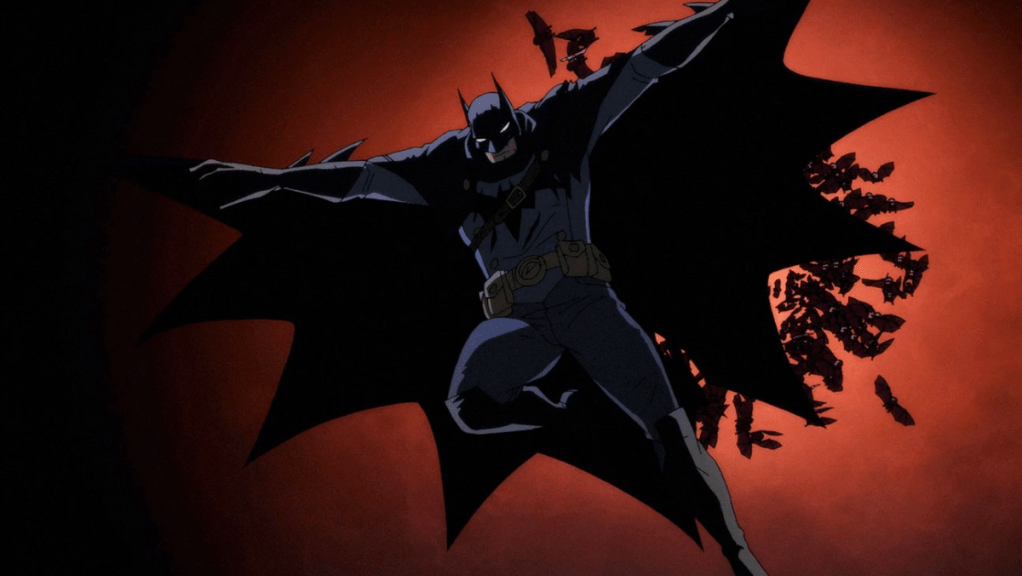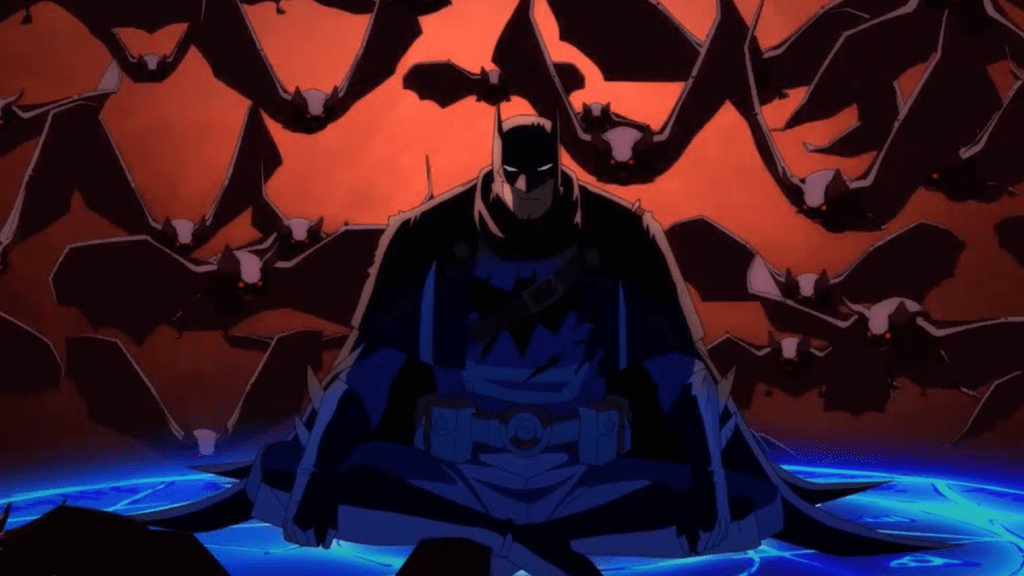ComingSoon Editor-in-Chief Tyler Treese spoke with Batman: The Doom That Came to Gotham producer Jase Ricci about adapting the Mike Mignola story and rebooting iconic characters.
“Batman: The Doom That Came To Gotham is a 1920s-based tale that finds explorer Bruce Wayne accidentally unleashing an ancient evil, expediting his return to Gotham City after a two-decade hiatus,” reads the film’s synopsis. “The logic/science-driven Batman must battle Lovecraftian supernatural forces threatening the sheer existence of Gotham, along the way being aided and confronted by reimagined versions of his well-known allies and enemies, including Green Arrow, Ra’s al Ghul, Mr. Freeze, Killer Croc, Two-Face, James Gordon, and Bruce’s beloved wards. Prepare for a mystical, often terrifying Batman adventure unlike any other.”
Tyler Treese: The movie has such great source material. I’d love to hear about your relationship with Batman: The Doom That Came to Gotham and when you first read it, because this was a perfect choice to make it into a movie.
Jase Ricci: Thanks, it wasn’t my choice! [Laugh]. But I would’ve if I had thought of it. But yeah, it’s so funny. I’m a lifetime nerd — everybody is a lifetime nerd if you work in this industry, and I love Batman and I’m a huge fan of H.P. Lovecraft too. For some reason, The Doom That Came to Gotham was just in a blind spot. I don’t know how it got there, but you have these blind spots every now and then. It’s like, “Wait, what?” I was close with James Krieg, we worked across offices at WB, and he’s just a powerhouse with all these, and we got friendly during Covid.
He called and he said about The Doom That Came to Gotham. I’m like, “You’re kidding, right? Yeah. Yes.” It’s just like, absolutely. This is like a dream project for me being, coming from a fan of both sides of that. I was very stoked. Then I read the book and I was like, “Oh my God.” After you read the book — it’s a great book, but, oh my gosh, can we bring this to the screen? Can I bring this to the screen? We had a great development team. Sam Liu is an amazing director and Jim, who’s worked on a bunch of these. We were all developing it together and I was really … it was just one of the most pleasant development experiences I’ve ever had. You couldn’t pull everything from the book, and you don’t want to just port everything. You don’t want to do a one-for-one. But I was really happy with what we did and what we took from the book. The film, looking at the art, it really paid homage to the original story.
It’s so fun to see how those Lovecraftian elements were all imbued into the DC superhero world. You also have it set during the 1920s. What did you like most about this very unique version of DC and having the freedom of it being Elseworlds and being able to show such different twists on familiar characters?
There are a lot of things. We took some liberties with translating some of the Robins, which was one of my favorite things to do. We added like Lucius — we brought in him to sort of help us explain how Batman had become that, how he had a Batcave when he got back, and stuff like that. I think a lot of it was because we took the basic structure of the book, and the book has a very final, conclusive ending, right? Batman doesn’t die, but he becomes something different. That was part of the fun of it, because the trick to writing … I’ve written a bunch of superhero stories and a bunch of Batman stories and you’ve always got to get them back to one at the end of the story, you know what I mean?
But here it’s just like, “No, in a way, Batman dies. You get to write that story, but you don’t have to worry about getting him back to where he was. Yes, he starts off similar to the Batman that we know in that he embraces logic and reason, but the whole story is about him letting go of those things to embrace the supernatural and, really, to embrace insanity to become something more. He’ll never come back to that. He’ll never be the Bruce Wayne on page one that he is at the book’s end, which was really fun. Knowing that this is a Batman that is going to completely change and irreparably change was a lot of fun.

I love this version of Batman. What was most interesting about working with a Bruce Wayne that was away from Gotham? We see him make his return but he’s not the stereotypical Bruce Wayne. You have a very different take here.
It was a challenge. I mean, a lot of that was laid out in the book and here, it was tricky to sort of imbue him with that. I think we got a lot of mileage out of the death scene where his father and his mother are murdered because it has to, obviously, drive the plot. And it comes back later in the script to sort of say, “Here’s also what happened at that scene.” But it also had to imbue him with that Bruce Wayne that has a love and respect for Gotham that is so important to him to keep fighting for the rest of the movie. It’s not like he’s the Bruce Wayne who grew up in Gotham and came to love it.
He left when he was eight, so you had to think about that with each of the characters that you bring in, like Oliver Queen. They’ve been friends for life, but how can they be friends for life if he left when they were eight? Then it’s like, “Oh, they ran into each other in Dushanbe,” you know what I mean? Stuff like that and the letters they send letters back and forth. But yeah, it was different. It was definitely a different Bruce Wayne, but it was important to the story to keep the essence and the love for his city without betraying what the idea of the story was. He’s been gone since he was a kid.
You’ve done some really great work with the 2012 Teenage Mutant Ninja Turtles series and I feel like that’s similar to working on DC stuff since you have so much lore and great stories that came before you. What’s most satisfying about getting to have your hands on these iconic properties and further their legacies?
Without dating myself, I remember a time when you had to wait years. Like Batman ’89, I was like, “Oh my God, they’re making a Batman movie,” and you have to wait for it to come out. Nothing came out. Before that was Superman. What came out between, you know? The Dolph Lundgren Punisher movie that came out? But now that superheroes are … well, almost oversaturated, but they’re in the zeitgeist so much that there’s so many different versions of Batman that are Batman. The Flash movie coming out is going to have several in there.
It’s a little liberating because it’s like, “Okay, everybody knows Batman. We don’t have to see the origin scene again. We don’t have to do this, we don’t do that, because people just know it.” My mother-in-law knows what the Batman origin story is. So you can sort of elide those details and take the story in a different direction.
In the last year and a half, I wrote technically five different versions of Batman, each of them remarkably different in different varying degrees. But I was co-executive producer on Bruce Timm’s show, Batman: Caped Crusader, and that’s a very different Batman than The Doom That Came to Gotham, a very different Batman from the DC Super Hero Girls show. So it’s fun to get these interpretations. Same thing with Turtles. They can reboot that — they are rebooting it again with that movie — but they reboot it every couple months and it’s slightly different, but it’s just making sure you find that kernel of familiarity with audiences.










